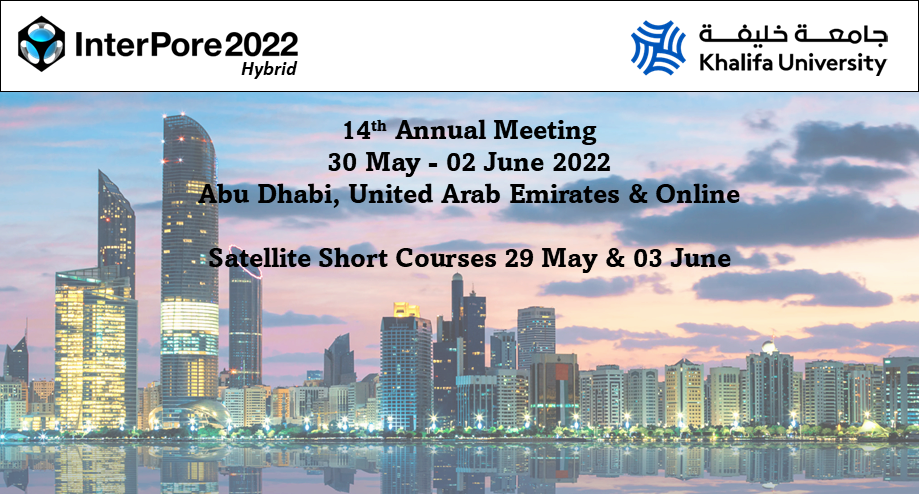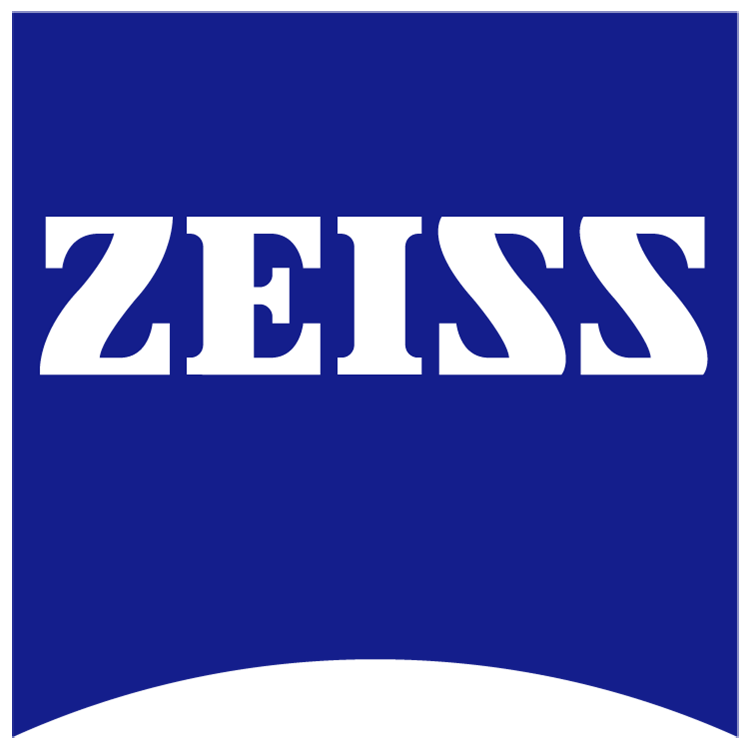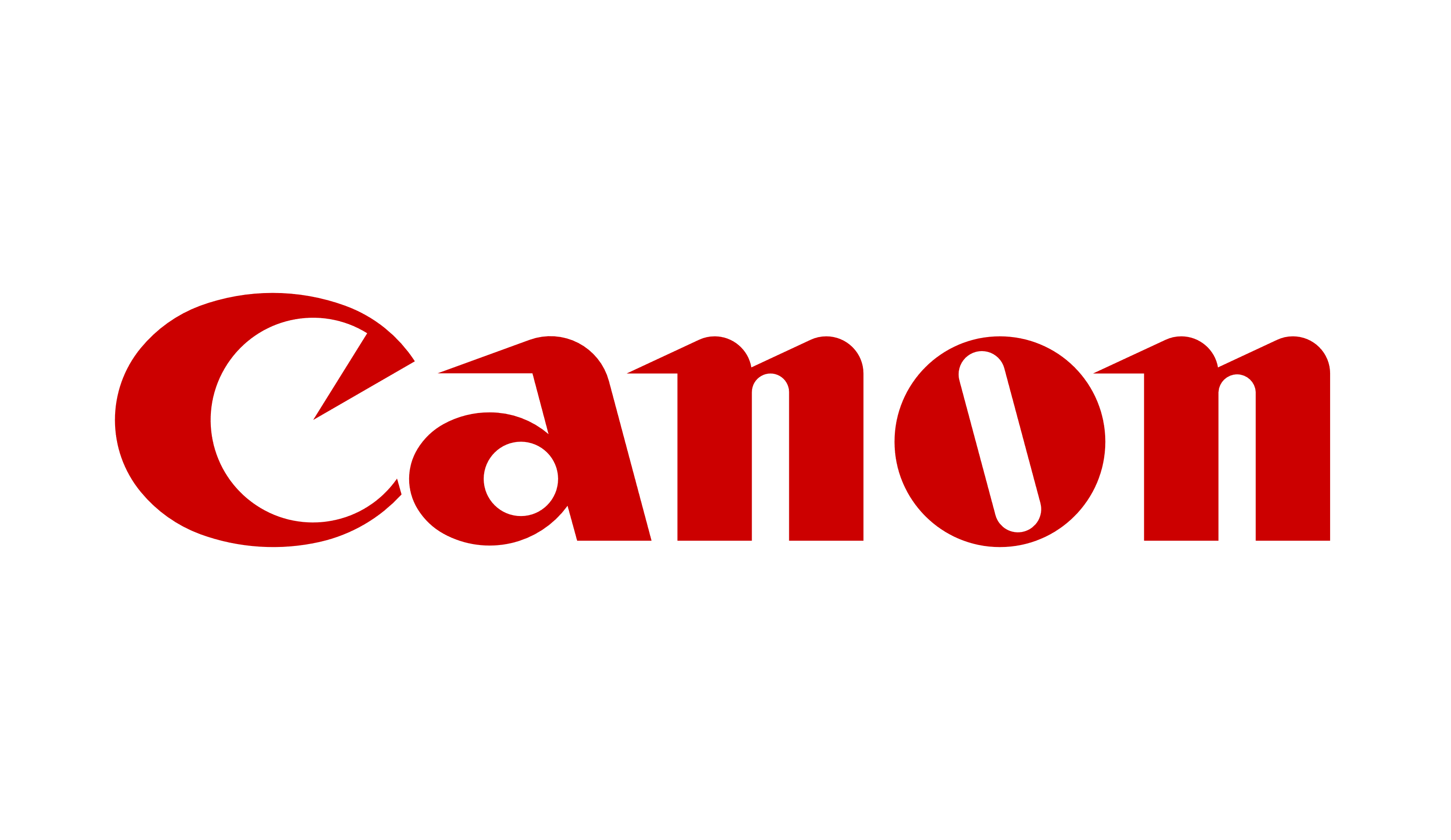Speaker
Description
Pore-scale dynamics of one phase flow commonly involves adherence (no-slip) boundary conditions at the fluid/solid interface. However, improved modeling such as flows at moderate Knudsen numbers (i.e. for values below 0.1), or homogenization of rock matrix roughness, may require slip conditions [1,2]. It turns out that a lack of knowledge on the rock matrix wall, built by X-Ray micro tomography, leads to the same type of slip conditions
$\displaystyle v= \frac{\beta}{2} (I-nn)\cdot (\nabla v + \nabla v^T)\cdot n$
where $v$ is the pore-scale velocity, $n$ is the unit normal vector oriented towards the fluid and $\beta$ is twice the slip-length.
The macroscopic model corresponding to steady one-phase flow in the creeping regime (Stokes equations) at the pore-scale with the slip condition was derived in [1, 2]. The macroscopic momentum equation corresponds to Darcy's law in which the permeability tensor is slip-dependent. This leads to a computation of an apparent permeability that depends on $\beta$ and that we denote $K_\beta$. This apparent permeability can be expanded in a power series of a Knudsen number, the zeroth-order term identifying to the intrinsic permeability with no slip and the higher order terms to slip-correction tensors, the first one generalizing, for an ideal gas, the classical Klinkenberg correction. All the tensors are given by the solution of coupled closure problems at the successive orders [2]. While this expansion has been addressed in [1] and [2] and used in the case of synthetic geometries, it has been used in large three-dimensional real geometries in [3] in the context of isotropic permeability, that is to say $K_\beta =\kappa_\beta I$ where $\kappa_\beta$ is a scalar. In this last case, the expansion
$\displaystyle \kappa_\beta=\kappa_0 + \beta \lambda_1 + \frac{\beta^2}{2}\lambda_2+\mathcal{O}(\beta^3)$
is shown to describe the uncertainty on the permeability values that results from the gray scale uncertainty generated by micro-tomography.
The coefficients $\lambda_k$, capturing this uncertainty estimation, are given by the solutions of the Stokes-like closure problems reported in [2] by formal expansion (from averaged equations) and re-established in [3] by asymptotic analysis (two-scale homogenization). They satisfy a non-homogeneous Dirichlet boundary condition (prescribed velocity) at the pore walls, whose value involves the immediate lower order slip momentum.
While the first order of this expansion has been detailed in [3], its second order estimation is provided for the first time in this presentation for operational 3D geometries: we apply our results to the high resolution rock sample studied in [4] and show that the second order brings a significant improvement of the uncertainty estimation on the absolute permeability. These results in a real geometry confirm what was anticipated in [2] for simplified 2D geometries and are relevant as they show the importance of slip at the macroscale.
References
[1] D. Lasseux, F.J. Valdés-Parada, J.A.O. Ochoa Tapia and B. Goyeau, A macroscopic model for slightly compressible gas slip flow in homogeneous porous media, Physics of Fluids 26(5), 053102, 2014. doi: 10.1063/1.4875812.
[2] D. Lasseux, F.J. Valdés-Parada and M.L. Porter, An improved macroscale model for gas slip flow in porous media, Journal of Fluid Mechanics 805, 118-146, 2016. doi:10.1017/jfm.2016.562.
[3] S. Perez, P. Moonen, and P. Poncet, On the Deviation of Computed Permeability Induced by Unresolved Morphological Features of the Pore Space, Transport in Porous Media, 2021. doi:10.1007/s11242-021-01713-z
[4] L. Hume, and P. Poncet, A velocity-vorticity method for highly viscous 3D flows with application to digital rock physics, Journal of Computational Physics 425, 109910, 2021. doi:10.1016/j.jcp.2020.109910
| Participation | In person |
|---|---|
| Country | France |
| MDPI Energies Student Poster Award | No, do not submit my presenation for the student posters award. |
| Time Block Preference | Time Block B (14:00-17:00 CET) |
| Acceptance of the Terms & Conditions | Click here to agree |









